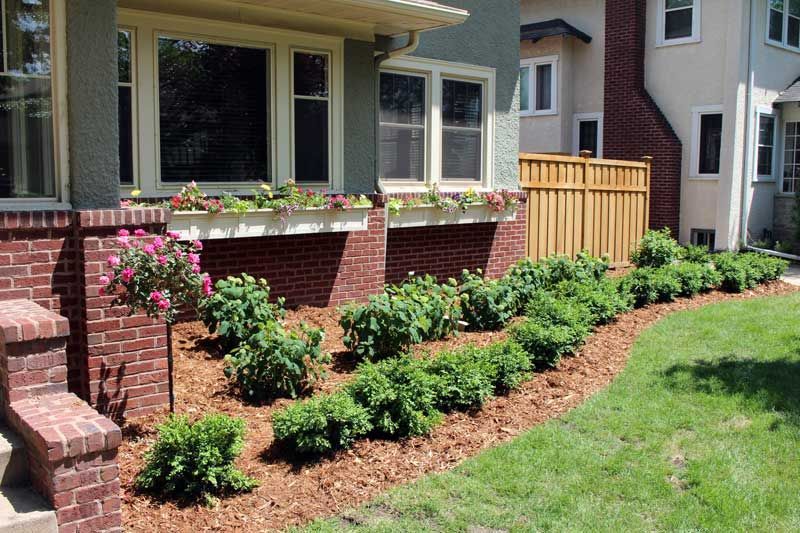3 Tips for Better Landscape Drainage
Outdoor drainage is the number one major issue we see in Minneapolis landscapes. Aesthetics and added function like patios and better designed plant spaces are crucial but handling the water and stopping it from coming in the home is the most important consideration before anything else. Over and over we hear and see the same problems from people about their outdoor space not handling water well. Because of that, we wanted to compile some of the best tips we’ve learned in our years of experience.
Proper Grading
This is the simplest and most important tip we can provide. Grading the landscape beds near the house correctly can be the difference between water getting into your basement and water draining away safely. When we do our professional landscape design, we go for a 6″ drop from the first 10′ from house. More drop = better drainage. Before doing any new landscaping around a house including plants or edging or anything, always install more dirt. The picture below is a great example of this. We installed quite a bit of dirt to really raise up the level against the house to allow all the water to flow down into the yard itself. This will keep the water from sitting at the house.
Plant spacing
This tip tends to go under the radar. A lot of homeowners want to pack in as many beautiful plants as possible. When planning out where the plants go though, some care and thought needs to go into the equation. If plants are too close together, the water from the roof and near the house cannot flow nicely between the plants. Water collecting near the house is never a good idea so keeping the plants a good distance apart is important. Adding in more of a drop away from the house with grading, you can plant closer together. You can see in the picture below that we have spaced out the hydrangeas and the boxwoods slightly more than normal to allow for water to still flow between them when the plants grow older.

Rock and weed barrier fabric
Fabric prevents erosion and allows water to flow straight away from the house. Fabric keeps the plant roots balls a little smaller and compact so stop plants from getting too big and too close together. Fabric and rock allow the water to zoom away from the house unobstructed. Mulch absorbs water and does not prevent any easy way for water to be drained away. It can also erode away along with the dirt underneath. Standard landscape fabric is water permeable but most water will sheet off. Poly sheeting is completely waterproof and is great for areas without plants or where you can’t get the proper slope away.
For all your landscape drainage and landscape design needs, we strongly suggest you consult with a trusted, experienced landscape designer
who can help you get the most value for your money now and in the future.
The post 3 Tips for Better Landscape Drainage
appeared first on KG Landscape Management.










